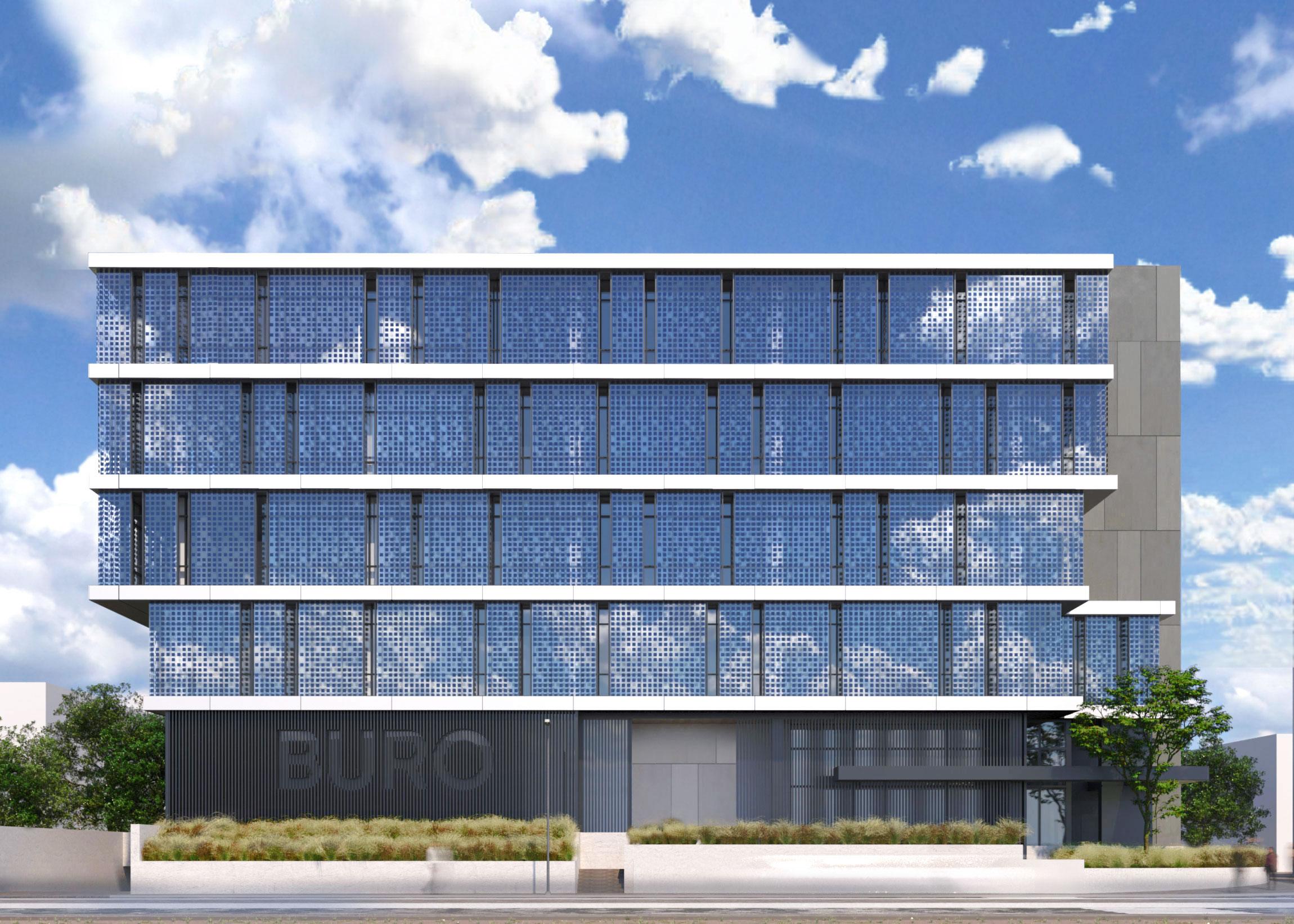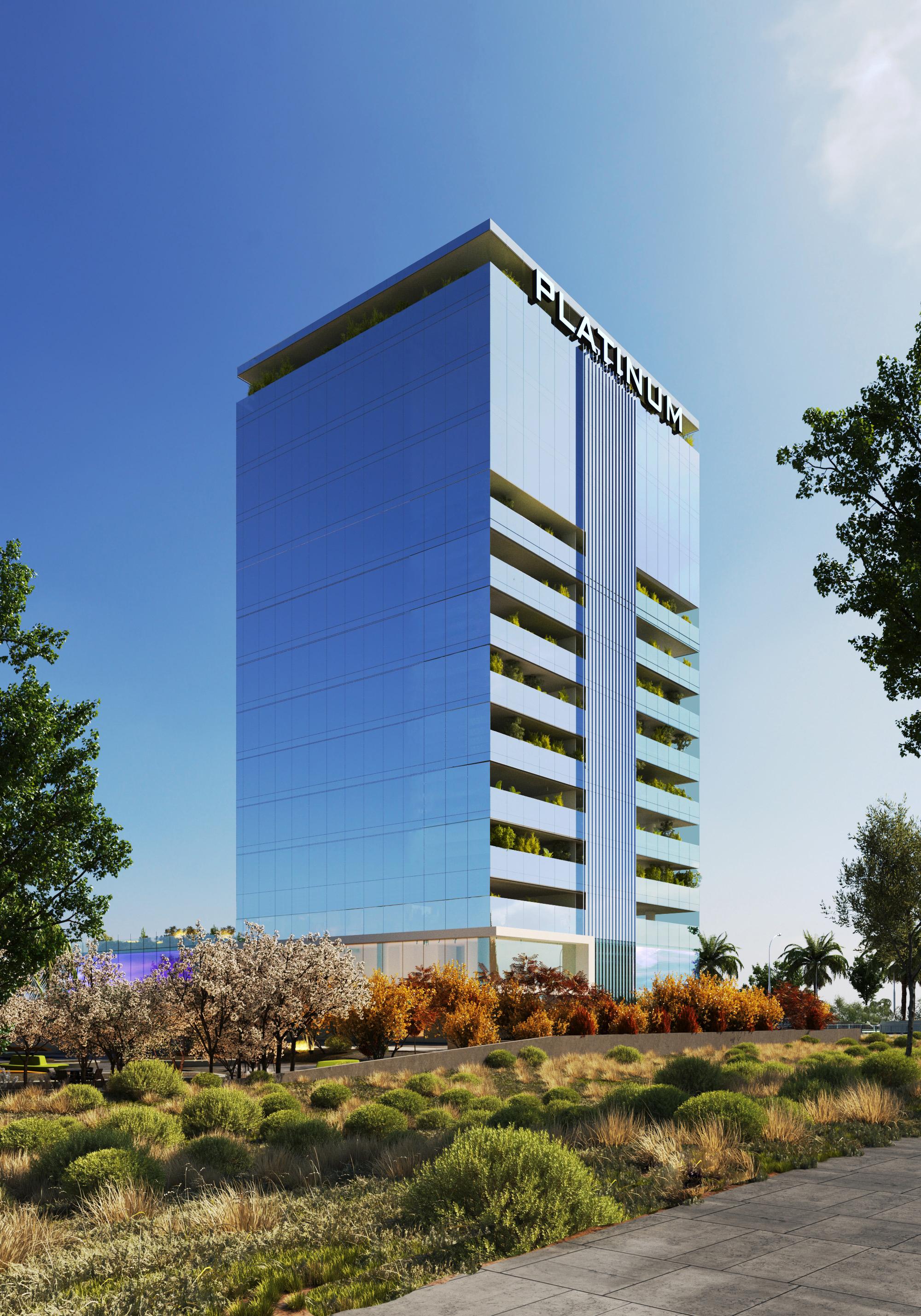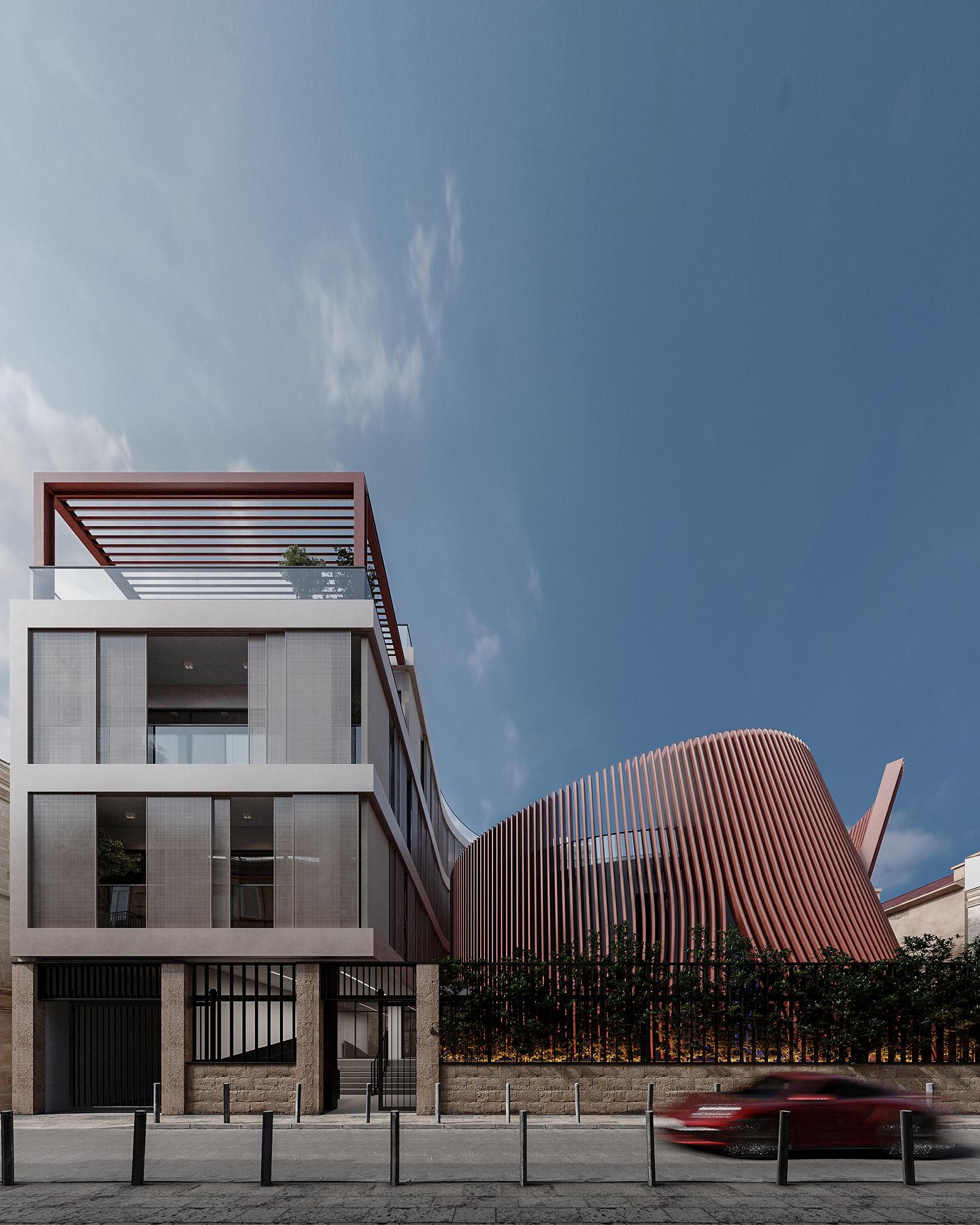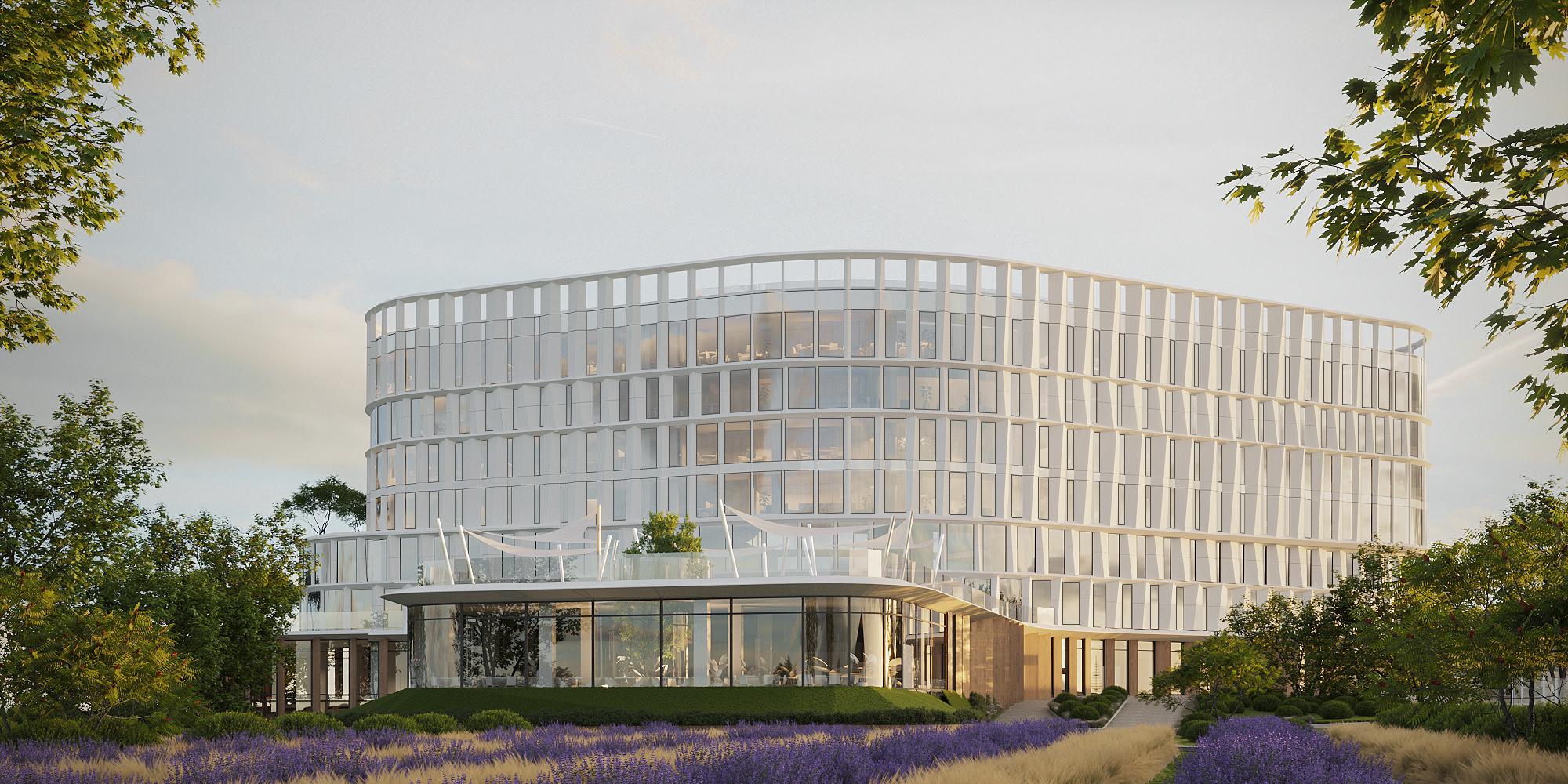Glass shiny facades have become an international trend and have filled cities around the world. But times change, technologies develop, and along with them, demands shift and new trends are formed. What will the facades of the future look like? Nick Zych, a leading architect at ZIKZAK Architects, shares his insights.
Energy-Generating Facades
Energy efficiency will become a primary characteristic of the facades of future office buildings. Photovoltaic panels integrated into facades transform buildings into energy generators. These panels can be easily incorporated into the enclosing structures without disrupting the aesthetic appeal of the building. Transparent solar panels allow buildings to generate electricity without affecting their appearance. The integration of such panels is most effective on southern facades, where maximum energy generation and protection from overheating are achieved by reducing transparency.

Facade Design by ZIKZAK Architects
Dynamic Facades
One of the most intriguing trends in facade technologies is the emergence of dynamic systems that respond to the environment. These facades adapt to environmental conditions in real-time, optimizing energy efficiency and comfort. Electrochromic glass, which changes its transparency or color in response to changes in sunlight, is becoming increasingly common. This "smart" glass reduces glare and solar heat gain, minimizing the need for air conditioning. Kinetic facades, which include movable elements, can change their configuration depending on weather conditions. These systems open to provide natural ventilation and close when insulation is needed. This creates a comfortable interior environment while simultaneously reducing energy consumption.

Facade Design by ZIKZAK Architects
Integration of Greenery
Vertical gardens, green walls, and facades fully covered with plants are becoming mega-popular. Green facades enhance the aesthetic appeal of office buildings and contribute to improved air quality. Plants absorb carbon dioxide, reducing the building's carbon footprint.
Sustainable Materials and Construction Methods
In the near future, we will see an increasing use of recycled and locally sourced materials. This will reduce the environmental impact of construction. Materials such as recycled steel, reclaimed wood, and eco-friendly concrete will become standard. Innovative materials like self-healing concrete and photocatalytic surfaces, which break down pollutants, will be used. These materials will extend the lifespan of facades and contribute to the overall improvement of the urban environment, as they require less maintenance and help clean the air.

Facade Design by ZIKZAK Architects
Enhancing User Experience
Advanced facade systems will incorporate sensors and IoT (Internet of Things) technologies to monitor and respond to environmental conditions and user needs. For example, facades will change their configuration to optimize natural lighting. Interactive elements such as digital displays integrated into the facade will provide real-time information or serve as dynamic artistic installations.

Facade Design by ZIKZAK Architects
Aesthetic Flexibility and Branding
Typical "glass boxes" will give way to more expressive, multifaceted, and textured structures. The aesthetic flexibility of facades will also increase, allowing for better expression of corporate identity and branding. Customizable facade elements such as LED lighting and modular components will enable the creation of even more unique and recognizable building exteriors. These elements can be reconfigured or updated to reflect changes in branding or to mark special events. After all, the facade is a dynamic and integral part of a company's image.
The facades of office buildings in the near future will testify to the intersection of technology, sustainability, and design innovation. Through the use of dynamic and responsive systems, greenery, eco-friendly materials, and energy-saving technologies, facades will enhance the efficiency and functionality of buildings. Architects and designers continue to push the boundaries of what is possible: the future of office building facades will be impressive.
Read also:


